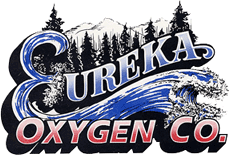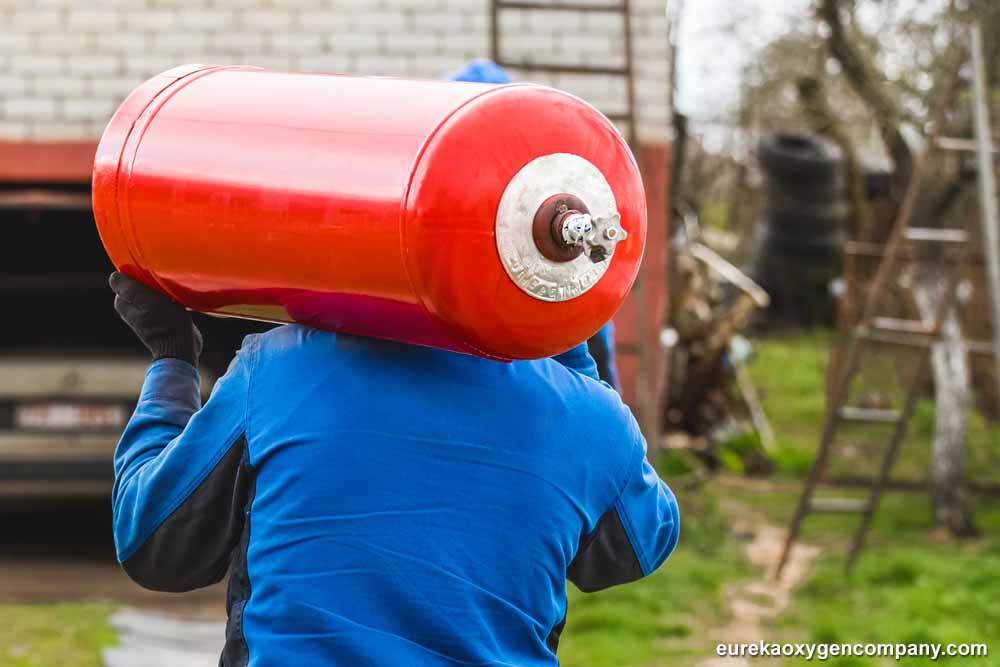Choosing a gas cylinder – sometimes referred to as a “tank” – involves assessing the significance of five traits of the cylinder as they relate to its utility for your intended application: cost, weight, pressure/capacity, durability, and longevity (lifespan). There are also five types or categories of air cylinders, but the fifth is still a developmental category largely unavailable to the general public. Of the other four categories, only the first two are generally worthy of consideration for bread-and-butter welding operations.
Type 1 is the historical only option – an all-metal cylinder. The positive considerations for Type 1 cylinders are their relative lower cost and their comparative durability. The only downside is their weight, which is the heaviest of all five categories. However, that weight should not be prohibitive unless the tank is actually being moved around the job site (other than as a fixture on the remote welding truck you have set up).
Type 2 is still an all-metal cylinder at its core but has been banded with carbon composite for additional strength and lesser weight. For most industrial welding applications, the additional cost of a Type 2 cylinder outweighs the benefits of lesser weight, and the Type 1 is usually adequate to the task.
Type 3 cylinders are a lighter aluminum shell at the core, fully wrapped with carbon composite. They provide potential for higher pressure fillings (up to 300 bar/43,500psi). That increased pressure is only beneficial in terms of the potential capacity and thereby the number of hours of operation between refills (a significant concern if on a truly remote job site).
Type 4 cylinders are a polymer liner inside a full carbon composite wrap. They provide the greatest capacity-to-weight ratio, but that polymer liner is not impermeable, which is to say that it is capable of leakage.
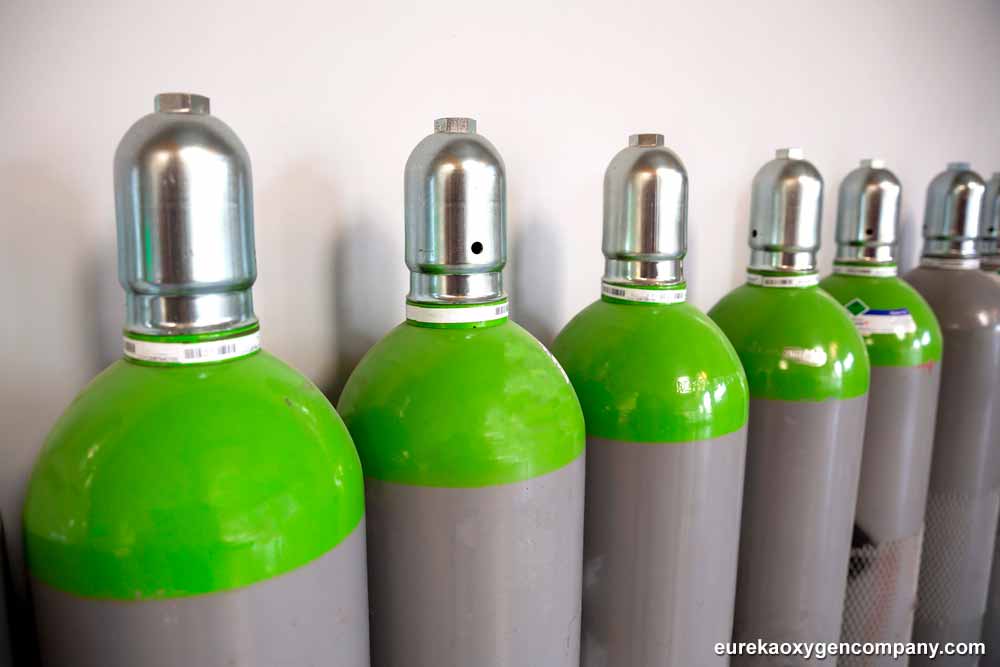
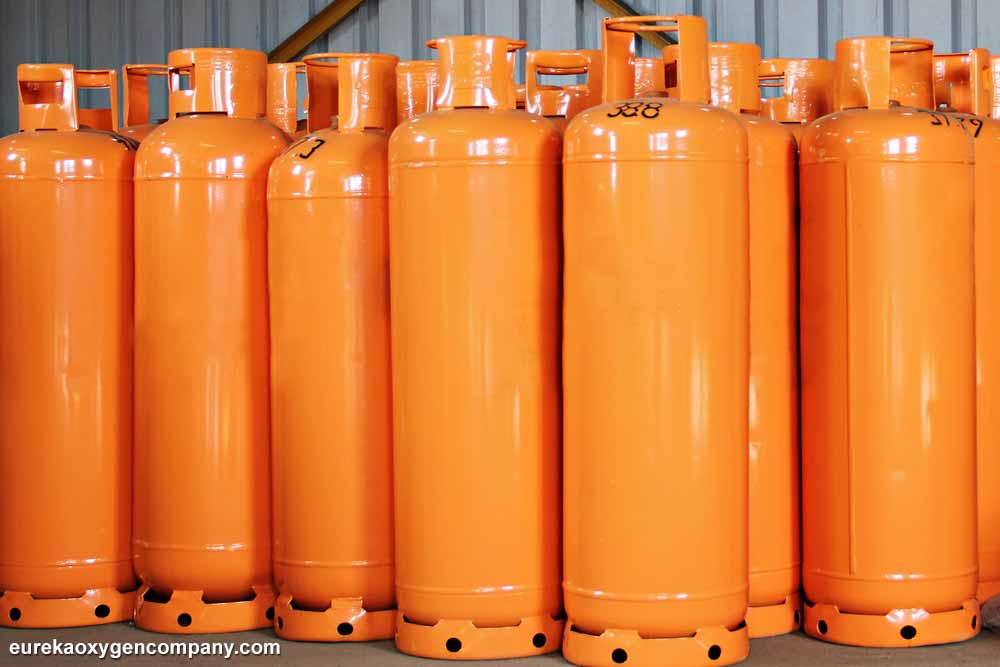
Liquefied gases are so-designated because they can switch states from gas to liquid when stored – even at room temperature – under pressure (as they are). Examples include anhydrous ammonia, chlorine, propane, and carbon dioxide. Some are corrosive, some are acidic, some are flammable, some (CO₂) could provide fire suppression but also disable human respiration. All are liquefied gases and warrant rigorous attention to appropriate cylinder selection.
Non-liquefied gases are, as their name suggests, gases that remain gases, regardless of temperature or pressure applied to them. They include oxygen, nitrogen, helium, and argon (Some flammable, some inert. All gases, all the time.)
Dissolved gases are considered the most dangerous of the bottled gases because the unadulterated gas is highly volatile. In order to make its storage and use safe, it must be dissolved into a more stable liquid. The primary case, that is applicable to welding, is acetylene, which must be dissolved into an acetone infused liquid filler – rendering it stable. For this application, a specifically designed cylinder for acetylene storage is required for safe storage and transport.
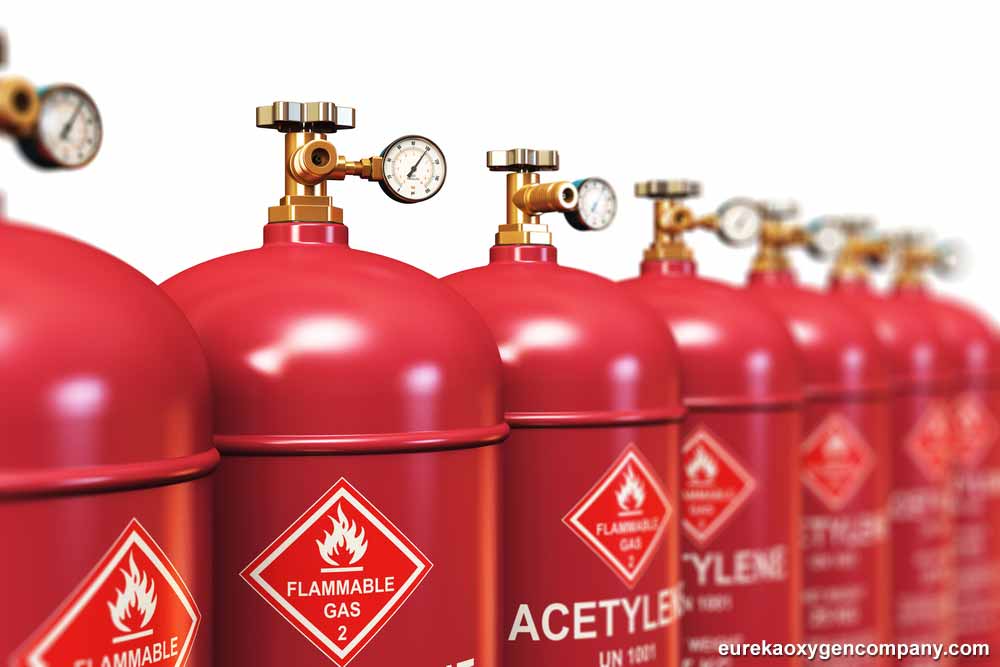
The expectations for gas cylinders are as diverse as the gases which they contain. There are charts available online, detailing all of the chemical properties of the common welding gases, if you want to peruse or memorize them. However, the staff at Eureka Oxygen can point you to the appropriate cylinder for your application and explain why. Call, email, or stop in and have an in-person conversation about the correct cylinder for you, and the corollary equipment you need to complement that cylinder. You can check here for a location near you.
